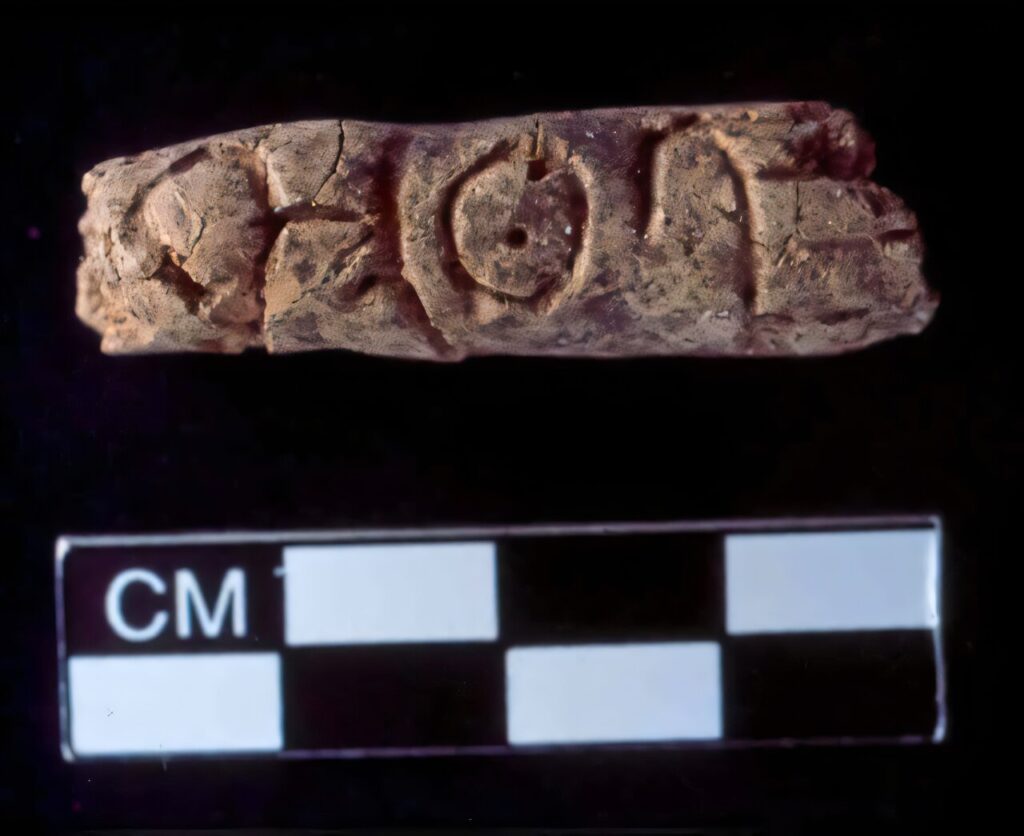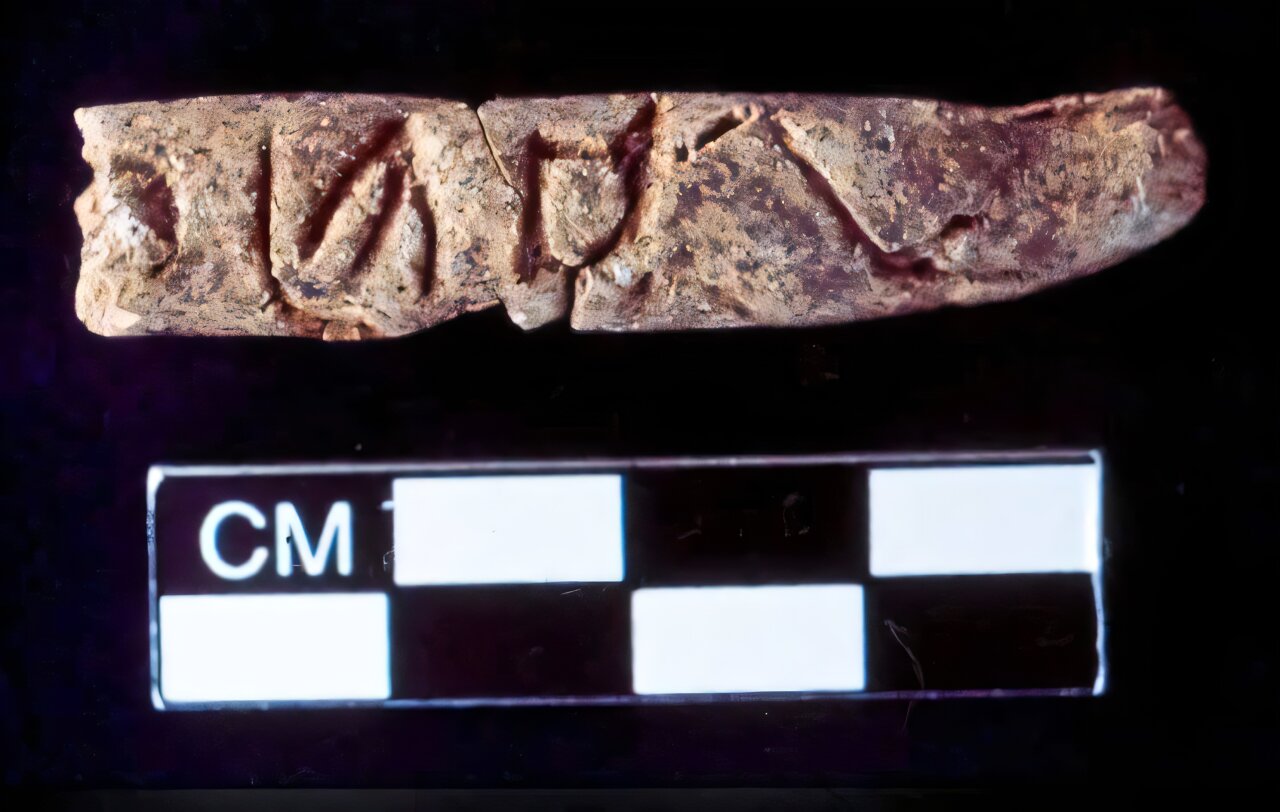In the realm of archaeology, the uncovering of ancient writing systems is always a monumental event, reshaping our understanding of early human civilization. A groundbreaking discovery has done just that, upending long-held beliefs about the origin of alphabetic writing. What was once thought to be a 1900 BCE invention in Egypt may, in fact, have been created much earlier and in an entirely different region. Evidence of what might be the oldest alphabetic writing in human history has been discovered etched onto clay cylinders found in a tomb in Syria by a team of researchers from Johns Hopkins University. This discovery not only challenges conventional thinking about the origins of written language but also reveals the early experimentation with communication technologies long before the formalized alphabets we know today.
The Unexpected Find: Clay Cylinders with Alphabetic Writing
The story of this remarkable discovery begins at Tell Umm-el Marra, an ancient site in western Syria that has yielded a wealth of historical treasures. A team of archaeologists, led by Glenn Schwartz, a professor of archaeology at Johns Hopkins University, spent years excavating the area. Tell Umm-el Marra was one of the first medium-sized urban centers to emerge in the region during the Early Bronze Age, a time when urbanization was beginning to take root across the Near East. The excavation site contained several tombs, some of which date back to around 2400 BCE—making them well over 4,000 years old.
Among the artifacts unearthed was a tomb that stood out in its preservation and the wealth of items it contained. The tomb, which belonged to an individual likely of high status, included six skeletons, along with an array of valuable goods—gold and silver jewelry, pottery, cookware, and a spearhead. However, the most exciting and unexpected discovery was four small, finger-length, clay cylinders. These cylinders, which were lightly baked, bore markings that appeared to resemble alphabetic writing—a form of communication that was previously thought to have emerged much later in history.

The cylinders were perforated, which led the researchers to speculate that they may have been strung together as part of a larger system, perhaps used to label objects or identify ownership. The writing etched onto these cylinders was not immediately decipherable, but the presence of what looked like an early alphabetic script was a profound find. The artifacts were carbon-dated to around 2400 BCE, a date that predates the earliest known alphabetic inscriptions by roughly 500 years.
Rethinking the Origins of the Alphabet
This discovery sends shockwaves through the field of archaeology and challenges the established timeline of the alphabet’s development. For decades, scholars have believed that the first alphabetic scripts emerged in Egypt or the Sinai Peninsula around 1900 BCE, evolving from earlier pictographic systems such as hieroglyphics. However, the newly uncovered cylinders from Syria suggest that alphabetic writing could have originated much earlier, and in a completely different geographical area.
The implications of this discovery are profound. The early alphabet, if indeed the writing on these clay cylinders is confirmed as such, would have been a revolutionary step forward in human communication. Alphabetic writing, as opposed to more complex systems like cuneiform or hieroglyphics, allows for the representation of speech with a relatively small set of symbols. This made writing more accessible to a broader range of people, not just the elite and royal classes, fundamentally transforming how societies functioned, how information was disseminated, and how communication was carried out.
“Alphabets revolutionized writing by making it accessible to people beyond royalty and the socially elite,” said Glenn Schwartz, reflecting on the significance of the discovery. “Alphabetic writing changed the way people lived, how they thought, how they communicated.” Before the advent of alphabets, writing was largely reserved for the elite, and literacy was confined to a select few. The alphabet, however, democratized writing, allowing for greater social mobility and the spread of ideas, fostering the exchange of knowledge and culture.
The Early Experimentation with Communication Technologies
What makes the discovery of these early alphabetic inscriptions particularly intriguing is the suggestion that people in this region were experimenting with new forms of communication technology much earlier than previously imagined. The cylinders, which are small yet intricately crafted, appear to have been part of a labeling or record-keeping system. This indicates that the people of Tell Umm-el Marra were engaged in early forms of written communication—possibly even before the widespread adoption of pictographs or cuneiform scripts.
The idea that ancient societies were experimenting with writing long before the established civilizations of Mesopotamia and Egypt is a significant shift in how we understand the evolution of human communication. It suggests that writing was not a sudden invention but rather a gradual process of development and refinement. Communities like those at Tell Umm-el Marra were likely engaged in practical, day-to-day record-keeping, using writing for mundane but essential purposes such as tracking goods, identifying ownership, and organizing social structures.
Schwartz, who co-directed the 16-year excavation at Tell Umm-el Marra with colleagues from the University of Amsterdam, believes that the discovery of these early alphabetic scripts has the potential to reshape our understanding of how writing systems spread across the ancient world. “This new discovery shows that people were experimenting with new communication technologies much earlier and in a different location than we had imagined before now,” he said. The implications for early urbanization in the Near East are equally profound, suggesting that writing may have played a more central role in the development of these urban centers than previously thought.
The Unanswered Questions: What Do the Cylinders Mean?
While the discovery of the clay cylinders with alphabetic-like writing is undoubtedly significant, there are still many unanswered questions. For one, the exact meaning of the inscriptions remains unclear. Without a means to translate the writing, scholars can only speculate on its purpose and content. The cylinders could have been used for a variety of functions, from recording trade transactions to labeling important objects or even marking social hierarchies.
One theory posits that the cylinders may have been used as tags or labels for goods, similar to modern barcodes or product tags. This would suggest that early societies were using writing for practical, administrative purposes—potentially tracking the movement of goods or even identifying the ownership of valuable objects like pottery or jewelry. The perforations on the cylinders might have been used to tie the objects to a string or cord, creating a system of identification or marking.
Scholars are also considering whether these alphabetic inscriptions were a precursor to the more formalized writing systems that later developed in Mesopotamia and Egypt. The similarities between the markings on the cylinders and later alphabetic scripts suggest that this early form of writing could have influenced the development of more recognizable systems of communication in the region.
Implications for Early Urbanization and Cross-Cultural Exchange
The discovery of these early alphabetic inscriptions opens up new possibilities for understanding the role of writing in early urban civilizations. If people in the ancient Near East were experimenting with alphabetic writing as early as 2400 BCE, this could mean that writing was a key driver of urbanization in the region. As cities like Tell Umm-el Marra grew, the need for record-keeping and communication would have become increasingly important, leading to the development of new technologies to manage complex social and economic systems.
Furthermore, this discovery suggests that writing systems may have spread more rapidly and across wider geographic areas than previously thought. The development of writing may have been less isolated than historians have assumed, with different cultures in the Near East potentially influencing each other and exchanging ideas. The presence of early alphabetic scripts in Syria could point to the existence of cross-cultural networks, where ideas, technologies, and innovations were shared between urban centers long before the rise of the great civilizations of Egypt and Mesopotamia.
A New Chapter in the History of Writing
The discovery of the earliest known alphabetic writing is a game-changer for historians, linguists, and archaeologists alike. It forces a reevaluation of how writing systems developed, where they originated, and how they influenced the course of human civilization. It challenges the assumption that the alphabet was a late development in the ancient world and opens up exciting new avenues for research into the history of communication, urbanization, and cross-cultural exchange.
As researchers continue to study the clay cylinders and attempt to decipher their inscriptions, the implications of this discovery will continue to unfold. What we know for certain is that the discovery of this ancient writing system has provided a fascinating glimpse into the world of early urban civilizations, where communication, organization, and the exchange of ideas were crucial to the growth of complex societies. The past, it seems, still holds many secrets waiting to be uncovered.
